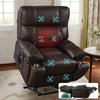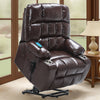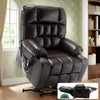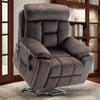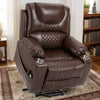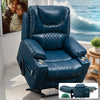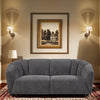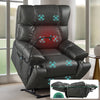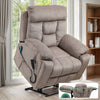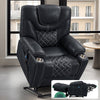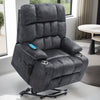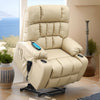The Science Behind Zero Gravity Chairs and Workplace Ergonomics
Understanding Zero Gravity: A Brief Overview
Zero gravity chairs are inspired by NASA's design for astronauts. They aim to reduce stress on the body by evenly distributing weight. These chairs mimic the position astronauts take during liftoff. The design helps relieve pressure on the spine and improves blood flow.

Zero gravity chairs recline to a specific angle. This angle puts the body in a neutral position. It's like floating in space, hence the name 'zero gravity'. The position reduces strain on muscles and joints. It also helps lower stress and promotes relaxation.
These chairs are not just for space travel. They have found their way into offices worldwide. Many companies now use them to improve employee comfort and productivity.
Ergonomic Advantages of Zero Gravity Chairs in the Office
Zero gravity chairs offer several ergonomic benefits in the office. They promote better posture, reducing back pain and neck strain. The chairs support the natural curve of the spine. This helps prevent slouching and the problems it can cause.
These chairs also improve blood circulation. Better blood flow means more oxygen to the brain. This can lead to increased focus and productivity. The reclined position can also help reduce swelling in the legs and feet.
Zero gravity chairs often come with adjustable features. These allow users to customize their seating position. This personalization ensures comfort for people of different sizes and shapes. The chairs can also help reduce the risk of repetitive strain injuries.
Assessing the Impact of Zero Gravity Chairs on Employee Performance
Evaluating Comfort and Health Benefits for Employees
Zero gravity chairs can significantly improve employee comfort. Many users report less back pain and fatigue after switching to these chairs. The chairs' design helps distribute body weight evenly. This reduces pressure points and improves overall comfort.

Health benefits are another key advantage of zero gravity chairs. They can help reduce the risk of deep vein thrombosis in office workers. The reclined position also aids in reducing acid reflux and improving breathing. Some users even report better sleep quality due to reduced stress and tension.
These chairs can also help with mental health. The comfortable position can reduce stress and anxiety. This can lead to a more positive work environment and improved job satisfaction.
Case Studies: Improved Productivity with Zero Gravity Chairs
Several companies have conducted studies on the impact of zero gravity chairs. One tech firm reported a 15% increase in productivity after introducing these chairs. Employees cited improved focus and reduced discomfort as key factors.
A call center saw a 20% reduction in absenteeism after switching to zero gravity chairs. Workers reported fewer back problems and less fatigue. This led to fewer sick days and improved overall performance.
Another study found that employees using zero gravity chairs took 30% fewer breaks. They reported feeling more comfortable and less need to stand up and stretch. This resulted in more uninterrupted work time and increased efficiency.
Implementing Zero Gravity Chairs in Your Business: Best Practices
Factors to Consider When Selecting Zero Gravity Chairs for Your Office
When choosing zero gravity chairs for your office, consider the following factors:

- Adjustability: Look for chairs with multiple reclining positions.
- Size: Ensure the chairs fit comfortably in your office space.
- Material: Choose durable, easy-to-clean materials.
- Weight capacity: Select chairs that can support various body types.
- Additional features: Consider options like massage functions or built-in USB ports.
It's also important to involve employees in the selection process. Let them test different models and provide feedback. This ensures you choose chairs that meet the needs of your workforce.
Consider the overall office design when selecting chairs. Choose styles that complement your existing decor. This helps create a cohesive and professional look in your workspace.
Ergonomic Solutions for Employees Who Require Special Accommodations
While zero gravity chairs offer many benefits, they may not suit everyone. Some employees may need special accommodations. It's important to have alternative options available.
For employees with specific health conditions, consult with an ergonomic specialist. They can recommend suitable chair options or modifications. This might include chairs with extra lumbar support or specialized headrests.
Some employees may prefer standing desks or balance ball chairs. Offer a variety of seating options to cater to different needs and preferences. This inclusive approach ensures all employees can work comfortably and productively.
Remember to provide training on how to use the chairs correctly. Proper use is key to reaping the full benefits of zero gravity chairs. Regular check-ins can help ensure employees are using the chairs effectively and comfortably.








